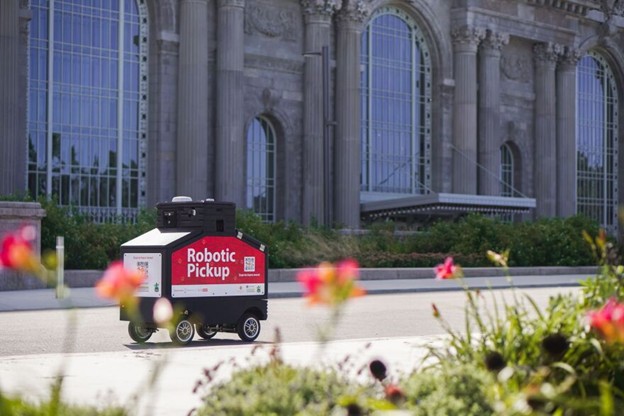
By Rachel Lewis
With the goal of cutting food waste by 50% from 2005 levels by 2030, The Michigan Department of Environment, Great Lakes and Energy (EGLE) has been helping to fund NextCycle Michigan. This program gives grants and advice to small companies in the state looking to reduce food waste. One of these start-ups is Penny Pickup. With robot food delivery vehicles becoming more popular, the company Orange Sparkle Ball decided to launch Penny Pickup as a pickup service, instead of delivery. Its focus is to remove trash and unwanted items, primarily food waste.

By Rachel Lewis
The Great Lakes Fishery Commission will receive a $2.1 million grant from the Environmental Protection Agency to address the invasive sea lamprey in the Grand River in Grand Rapids, Michigan.

By Donté Smith
The Great Lakes, a vital freshwater expanse for millions, face an ongoing environmental crisis. Beneath the vast waters lies a significant threat: pollution stemming largely from agricultural runoff. This flow of excess nutrients like phosphorus and nitrogen contributes to harmful algal blooms and expanding “dead zones,” jeopardizing ecosystems, water quality and public health across the region. Amidst these challenges, Barn Sanctuary in Chelsea, Michigan, works to make a positive impact on the region. Tom McKernan, sanctuary co-founder and operations director, wants the farm to stand as a living model where animal welfare and ecological stewardship aren’t just compatible, but linked.

By Emilio Perez Ibarguen
In 2020, Lawmakers gathered testimony, sought federal funding and considered creating a task force to combat coastal erosion. Local governments looked to replace outdated zoning rules that let people build too close to the shore. Experts suggested fixes, from incentivizing property owners to move their homes farther inland to banning seawalls that ultimately worsen erosion. But the political will for change seemed to recede with the water. Five years since the height of the crisis — with water levels now 6 inches below average — most Michigan communities still allow home construction perilously close to the shore. Bills aiming to curb construction on coastal dunes or make it easier for homeowners to protect their homes with temporary barriers have failed to gain traction in the Legislature.
More Headlines




